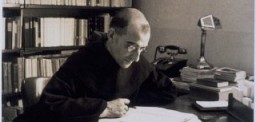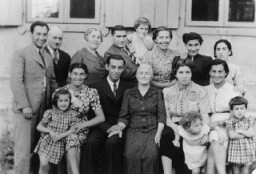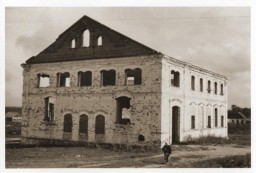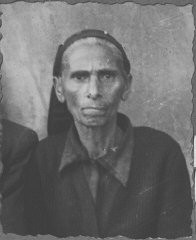You searched for: %E4%BA%9A%E9%A9%AC%E9%80%8A%E5%95%86%E5%9F%8E%E5%BF%AB%E9%80%9F%E6%90%AD%E5%BB%BA%E3%80%90TG%EF%BF%BD%EF%BF%BD%EF%BF%BD%EF%BF%BD%EF%BF%BD%EF%BF%BD%EF%BF%BD%EF%BF%BD%EF%BF%BD%40EK7676%E3%80%91%E5%B9%B3%E5%8F%B0%E5%8C%85%E7%BD%91%E6%90%AD%E5%BB%BA%E4%BA%9A%E9%A9%AC%E9%80%8A%E5%95%86%E5%9F%8E%E5%BF%AB%E9%80%9F%E6%90%AD%E5%BB%BA%E3%80%90TG%EF%BF%BD%EF%BF%BD%EF%BF%BD%EF%BF%BD%EF%BF%BD%EF%BF%BD%EF%BF%BD%EF%BF%BD%EF%BF%BD%40EK7676%E3%80%91%E5%B9%B3%E5%8F%B0%E5%8C%85%E7%BD%91%E6%90%AD%E5%BB%BA4d8SzGeGiu
<< Previous | Displaying results 26-50 of 210 for "%E4%BA%9A%E9%A9%AC%E9%80%8A%E5%95%86%E5%9F%8E%E5%BF%AB%E9%80%9F%E6%90%AD%E5%BB%BA%E3%80%90TG%EF%BF%BD%EF%BF%BD%EF%BF%BD%EF%BF%BD%EF%BF%BD%EF%BF%BD%EF%BF%BD%EF%BF%BD%EF%BF%BD%40EK7676%E3%80%91%E5%B9%B3%E5%8F%B0%E5%8C%85%E7%BD%91%E6%90%AD%E5%BB%BA%E4%BA%9A%E9%A9%AC%E9%80%8A%E5%95%86%E5%9F%8E%E5%BF%AB%E9%80%9F%E6%90%AD%E5%BB%BA%E3%80%90TG%EF%BF%BD%EF%BF%BD%EF%BF%BD%EF%BF%BD%EF%BF%BD%EF%BF%BD%EF%BF%BD%EF%BF%BD%EF%BF%BD%40EK7676%E3%80%91%E5%B9%B3%E5%8F%B0%E5%8C%85%E7%BD%91%E6%90%AD%E5%BB%BA4d8SzGeGiu" | Next >>
-
Father Jacques
ArticleFather Jacques (Lucien Bunel) provided refuge to Jews and others at a school in Avon, France. Imprisoned in several Nazi camps for his activities, he died soon after liberation.

-
Bremen-Farge
ArticleLearn more about Bremen-Farge, a subcamp of Neuengamme where the majority of prisoners were used to construct an underground U-boat shipyard for the German navy.

-

-
Chelmno
ArticleThe Chelmno killing center was the first stationary facility where poison gas was used for mass murder of Jews. Killing operations began there in December 1941.

-
Maria Nemeth
ID CardMaria's parents lived in Szentes, a town in southeastern Hungary, located 30 miles from the city of Szeged. Her mother, Barbara, was born in the neighboring town of Hodmezovasarhely, but moved to Szentes when she married. Maria's father was a dentist. 1933-39: Maria was born in 1932. In 1937 her mother took in a young Austrian woman who lived with the family and helped Maria learn German. 1940-44: In March 1944 German troops occupied Hungary. Members of the Hungarian fascist party, Arrow Cross,…

-
Nazi Rule
ArticleAfter they rose to power in 1933, Hitler and the Nazis eliminated democratic freedoms and took control of all aspects of public life in Germany. Learn more.

-

-
The Malmedy Massacre
ArticleOn December 17, 1944, one day after the beginning of the Battle of the Bulge, a Waffen SS unit captured and murdered 84 US soldiers. This atrocity is known as the “Malmedy Massacre.”

-
Belzec
ArticleBelzec was the first of three killing centers in Operation Reinhard, the SS plan to murder almost two million Jews living in the German-administered territory of occupied Poland.

-
Börgermoor Camp
ArticleBörgermoor was part of the Nazi regime’s early system of concentration camps. It was located in the Emsland region of Prussia.
-
Zdziecioł (Zhetel)
ArticleThe Nazis occupied Zdziecioł (Zhetel), Poland in 1941. Learn more about the city and ghetto during World War II.
-
The Weimar Republic
ArticleThe Weimar Republic was a liberal democratic republic founded in Germany in the aftermath of WWI. Learn about the era’s political and economic crises and social trends.

-
Neuengamme
ArticleIn 1938, the Nazis established Neuengamme concentration camp. Learn more about camp conditions, medical experiments, and liberation.

-
Oranienburg
ArticleThe Oranienburg concentration camp was established as one of the first concentration camps in Nazi Germany on March 21, 1933. Learn more

-
Mir
ArticleThe Mir ghetto was established in Mir, Poland in 1941. Learn more about life and resistance in the ghetto.

-
Portrait of Ester Eschkenasi
PhotoPortrait of Ester Eschkenasi, wife of Sava Eschkenasi. She lived at Karagoryeva 91 in Bitola. This photograph was one of the individual and family portraits of members of the Jewish community of Bitola, Macedonia, used by Bulgarian occupation authorities to register the Jewish population prior to its deportation in March 1943.

-
Judge Thomas Buergenthal with members of the Inter-American Court of Justice
PhotoJudge Thomas Buergenthal (front row, right) with other members of the Inter-American Court of Justice in San Jose, Costa Rica. Thomas served from 1979–91 and was president from 1985-1987. San Jose, Costa Rica, 1980.

-
Berga-Elster ("Schwalbe V")
ArticleAt the Berga-Elster subcamp of Buchenwald, prisoners were forced to do dangerous and brutal work in tunnels to support fuel production for the German war effort.

-
Law on the Head of State of the German Reich
ArticleThe Law on the Head of State of the German Reich was the last step in destroying democracy in interwar Germany and making Adolf Hitler a dictator. Learn more.
-
Jeno Muhlrad
ID CardJeno was the youngest of five children born to Jewish parents living in a suburb of Budapest. His father was a wholesale merchant who sold beer to restaurants and stores. After receiving a university diploma, Jeno became a pharmacist. He and his wife, Aranka, and their two children, Eva and Andras, shared a large old house in Ujpest with Jeno's father and other members of the extended family. 1933-39: Jeno's friends and family have helped him raise the large amount of money he needs to lease his own…

-
Dora Unger
ID CardDora, her parents, brother, aunt, uncle, and two cousins lived together in her grandfather's home in Essen, Germany. The Ungers were an observant Jewish family, and when Dora was 8, she began to regularly attend meetings of Brit HaNoar, a religious youth organization. 1933-39: In October 1938 a teacher, with tears in her eyes, came to Dora at the municipal pool, saying "Jews cannot swim here anymore." Just weeks later, on November 9, Jews were arrested and their property destroyed. A neighbor tried to…

-
Jeno Nemeth
ID CardJeno moved to Szentes from a tiny farming community near the city of Szolnok, where he and his two brothers had been born to Jewish parents. Jeno owned a store that carried groceries and hardware items. He lived in the southeast Hungarian town of Szentes. Jeno and his wife, Juliana, had two married daughters, Barbara and Margit. Their son, Desider, was a dentist in Szentes. 1933-39: Jeno and his wife work hard in their store. The Depression of the 1930s was devastating, but things are starting to get a…

-
Ravensbrück
ArticleLearn about conditions and the treatment of prisoners in Ravensbrück, the largest concentration camp for women in the German Reich.

-
Collaboration
ArticleTo perpetrate the Holocaust, Nazi Germany relied on the help of allies and collaborators from across Europe, including governments, institutions, and individuals.

-
Subcarpathian Rus (Ukraine)
ArticleLearn more about the Transcarpathian region of Ukraine (Subcarpathian Rus) before and during World War II.

